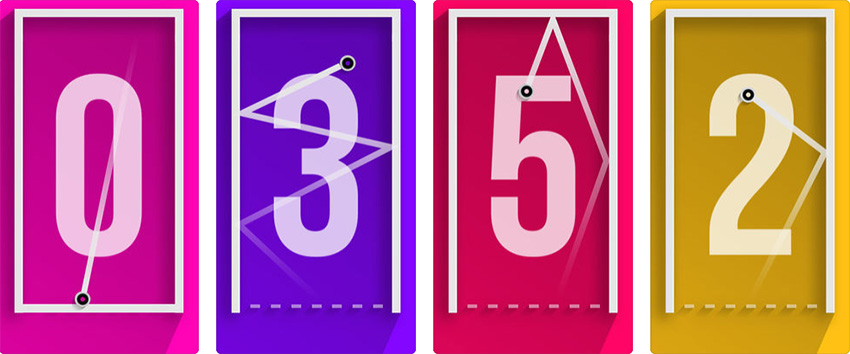Build a HTML5 game like “Block it” using Phaser 3 and Arcade physics in less than 100 lines of code
Talking about Block it game, Game development, HTML5, Javascript and Phaser.
Another tutorial series, another huge success brought to you by Ketchapp studio: Block it (Android version: here).
Just like all other Ketchapp games, this game too is really simple: just avoid the ball to fly off the screen by tapping at the right time to activate a wall and keep it into the game.
Have a look:
Tap or click to start and to activate the lower wall.
I was able to build the game in less than 100 lines thanks to Phaser and Arcade physics, and the core of the script is in checkCollision property of an Arcade physics body which allows you to decide whether the body is checked for collisions.
So it’s just a matter of enabling/disabling collision checking according to player input and a timer.
Have a look at the source code, it also has room for customization in gameOptions object.
let game;
let gameOptions = {
// duration of the wall, in milliseconds
wallDuration: 100,
// ball start speed, in pixels/second
ballStartSpeed: 500,
// ball speed increase at each successful bounce, in pixels/second
ballSpeedIncrease: 20
}
window.onload = function() {
let gameConfig = {
width: 480,
height: 640,
scene: playGame,
backgroundColor: 0x222222,
physics: {
default: "arcade"
}
}
game = new Phaser.Game(gameConfig);
window.focus()
resize();
window.addEventListener("resize", resize, false);
}
class playGame extends Phaser.Scene{
constructor(){
super("PlayGame");
}
preload(){
this.load.image("ball", "ball.png");
this.load.image("wall", "wall.png");
}
create(){
this.gameOver = false;
this.canActivateWall = true;
this.ballSpeed = gameOptions.ballStartSpeed;
this.wallGroup = this.physics.add.group();
this.theBall = this.physics.add.image(game.config.width / 2, game.config.height * 4 / 5, "ball");
this.theBall.body.setCircle(25)
this.theBall.setBounce(1)
this.createWall(32, game.config.height / 2, 32, game.config.height - 96);
this.createWall(game.config.width - 32, game.config.height / 2, 32, game.config.height - 96);
this.createWall(game.config.width / 2, 32, game.config.width - 32, 32);
this.lowerWall = this.createWall(game.config.width / 2, game.config.height - 32, game.config.width - 32, 32);
this.physics.add.collider(this.theBall, this.wallGroup, function(ball, wall){
this.canActivateWall = true;
if(wall.x == this.lowerWall.x && wall.y == this.lowerWall.y){
this.ballSpeed += gameOptions.ballSpeedIncrease;
let ballVelocity = this.physics.velocityFromAngle(Phaser.Math.Between(220, 320), this.ballSpeed);
this.theBall.setVelocity(ballVelocity.x, ballVelocity.y);
}
}, null, this);
this.input.on("pointerdown", this.activateWall, this);
}
createWall(posX, posY, width, height){
let wall = this.physics.add.image(posX, posY, "wall");
wall.displayWidth = width;
wall.displayHeight = height;
this.wallGroup.add(wall);
wall.setImmovable();
return wall;
}
activateWall(){
if(this.theBall.body.speed == 0){
let ballVelocity = this.physics.velocityFromAngle(Phaser.Math.Between(220, 320), this.ballSpeed)
this.theBall.setVelocity(ballVelocity.x, ballVelocity.y);
this.lowerWall.alpha = 0.1;
this.lowerWall.body.checkCollision.none = true;
return;
}
if(this.canActivateWall){
this.canActivateWall = false;
this.lowerWall.alpha = 1;
this.lowerWall.body.checkCollision.none = false;
let wallEvent = this.time.addEvent({
delay: gameOptions.wallDuration,
callbackScope: this,
callback: function(){
this.lowerWall.alpha = 0.1;
this.lowerWall.body.checkCollision.none = true;
}
});
}
}
update(){
if((this.theBall.y > game.config.height || this.theBall.y < 0) && !this.gameOver){
this.gameOver = true;
this.cameras.main.shake(800, 0.05);
this.time.addEvent({
delay: 800,
callbackScope: this,
callback: function(){
this.scene.start("PlayGame");
}
});
}
}
}
function resize() {
var canvas = document.querySelector("canvas");
var windowWidth = window.innerWidth;
var windowHeight = window.innerHeight;
var windowRatio = windowWidth / windowHeight;
var gameRatio = game.config.width / game.config.height;
if(windowRatio < gameRatio){
canvas.style.width = windowWidth + "px";
canvas.style.height = (windowWidth / gameRatio) + "px";
}
else{
canvas.style.width = (windowHeight * gameRatio) + "px";
canvas.style.height = windowHeight + "px";
}
}
In next step we’ll see how to handle scores and turn it into a Facebook instant games, meanwhile download the source code.
Never miss an update! Subscribe, and I will bother you by email only when a new game or full source code comes out.


